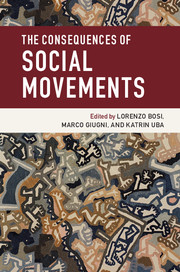15 - Protest online: theorizing the consequences of online engagement
from Conclusion
Published online by Cambridge University Press: 05 January 2016
Summary
Drawing inspiration from protesters who have weathered social stigma, police dogs, rubber bullets, private militias, and even death, social movement scholars collectively hope that when people come together to collectively embody “power in movement” (Tarrow 1994) that this power has some influence or effect. Leaving aside for a moment the varied ability of the field to empirically validate these hopes where traditional, “offline” protest is concerned, many activists and social movement scholars have been far less hopeful about the potential implications of Internet-enabled activism. Instead, scholars and activists have questioned the ability of Internet activism to make change, denigrating online activism by referring to it as “slacktivism,” or privileging offline protest as “real protest” (Diani 2000; Rucht 2004; Tarrow 1998) or “‘real’ actions” (Van Laer and Van Aelst 2010).
But, these negative views are in contrast to what many participants report. For instance, a 2010 survey found that 59% of Americans, and 64% of Internet users, thought that the Internet has had a major impact on the ability of groups to impact society and 49% of Americans, and 52% of Internet users, thought this was true about impacts in their local communities too (Rainie et al. 2011). Likewise, when respondents had participated in the last 12 months in a online group that they judged to be successful, 46% thought that Internet usage played a major role in raising awareness about the issue (Rainie et al. 2011: 3).
I challenge strident dismissals of Internet activism by evaluating the likely range of potential impacts for different kinds of Internet activism. Specifically, I review research on four broad types of Internet activism to evaluate the likelihood of outcomes for each type. I find that one of these types of Internet activism is likely to be ineffective but its offline equivalent is similarly ineffective. For two other types of Internet activism, I find that their potential effects are largely indirect and thus greatly depend on a mediating variable to ultimately determine effectiveness. For the final type of Internet activism, I argue that it might be consequential and therefore examine potential consequences in terms of policy, cultural, internal movement, and biographical impacts. The goal of the chapter is to provide both a more even-handed comparison of offline and online activism and to suggest paths for future research.
- Type
- Chapter
- Information
- The Consequences of Social Movements , pp. 363 - 400Publisher: Cambridge University PressPrint publication year: 2016
References
- 12
- Cited by



